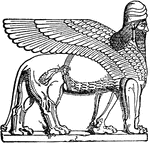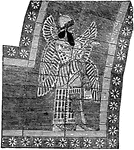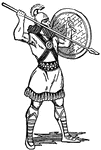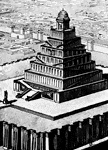This ClipArt gallery offers 104 illustrations of the historic Assyrian Empire. Images include people, ornament, buildings, architectural details, religion, and the arts.

Assyrian Mule
The animal life of Assyria was extremely varied. This image depicts a mule from this area.
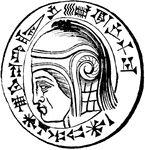
Nebuchadnezzar
"The most illustrious of Babylonian kings, was the son of Nabopolassar, the general of the Babylonian…
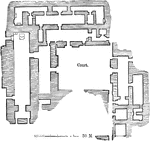
Floor Plan of the Palace at Nimrud
One peculiarity is visible in all Assyrian buildings, namely, that all the chambers are very narrow…
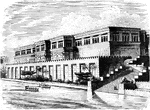
Assyrian palace
"All the Assyrian buildings were erected on terraces, to which flights of steps gave access, and it…
Pillar of a Table in an Assyrian Relief
Representing the pillar of a table, bears a strong resemblance to an Ionic capital as displayed in Asia…

Pillar on a Lion's Back
In the fragment of a relief from Kuyunjik columns occur which rest on a cushion-shaped base on a lion's…
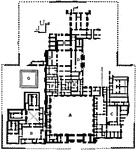
Plan of the Palace at Khorsabad, 722–705 BC
This is a diagram of the Palace of Khorsabad, 10 miles north–east of Nineveh, near Mosul, Iraq.…

Row 3 of Hieroglyphics
A row of hieroglyphics showing men working. These are to honor Shalmaneser, king of Assyria.
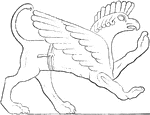
Sculptured Griffin from the Sculptures in the Ruins of Nineveh
A representation of an Assyrian griffin that adorned their buildings prior to the Persian conquest.
Sculptured Ornamental Border from the Ruins of Nineveh
Over the Winged Bulls were painted other acts of the king surrounded by his eunuchs and warriors, and…
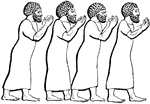
Sennacherib
Figures from the palace of Sennacherib, located in Kouyunjik, Nineveh (ancient Assyria).

The Cylinder of Sennacherib
"A six-sided cylinder of terra-cotta found at Ninevah. It contains a record of eight years of Sennacherib's…

Ancient Susa
An image depicting an ancient city of the Persian, Parthian, and Elamite empires of Iran.
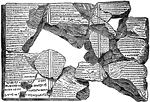
Assyrian Table with Deluge Legend
An illustration of an Assyrian tablet depicting part of the Deluge legend. A deluge myth or flood myth…

Assyrian Temple
This Assyrian Temple is located in present day Khorsabad, Northern Iraq. Khorsobad was the Assyrian…
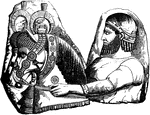
Warrior and horses
An engraving of a warrior and horses from the mound of Khorsabad, Nineveh. (Capital of ancient Assyria).
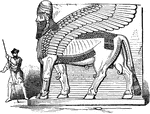
Winged Bull from Nimrud
The Sumerian word lama, which is rendered in Akkadian as lamassu, refers to a beneficient protective…

